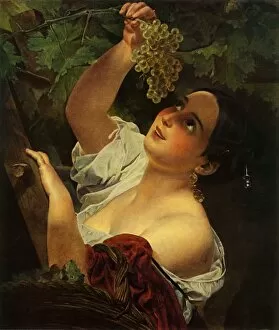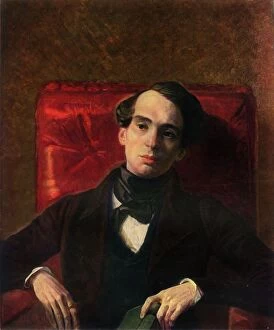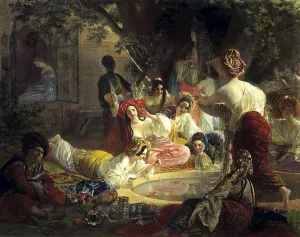Karl Pavlovich Briullov Collection
Karl Pavlovich Briullov, a renowned Russian artist of the 19th century, left an indelible mark on the art world with his masterpieces
All Professionally Made to Order for Quick Shipping
Karl Pavlovich Briullov, a renowned Russian artist of the 19th century, left an indelible mark on the art world with his masterpieces. One such masterpiece is "The Siege of Pskov by Stephen Bathory in 1581" which he painted between 1839 and 1843. This epic historical painting captures the intensity and brutality of war, showcasing Briullov's exceptional talent for storytelling through art. In contrast to this intense battle scene, Briullov also demonstrated his versatility as an artist with works like "Italian Noon (Italian Girl picking Grapes)" from 1827. This charming piece transports us to a sunny Italian countryside where we witness a young girl engrossed in her task amidst lush vineyards. The vibrant colors and meticulous attention to detail showcase Briullov's ability to capture everyday moments with grace and beauty. Another notable work by Briullov is "The Horsewoman" from 1832. In this painting, he portrays a strong-willed woman confidently riding her horse against a picturesque landscape backdrop. The dynamic composition and skillful brushwork highlight both the power of nature and the resilience of its subject. Briullov's talent extended beyond capturing scenes; he was also adept at creating striking portraits that revealed the essence of his subjects' personalities. His portrait of General Vasili Alexeyevich Perovsky from 1836 exemplifies this mastery. Through careful observation and precise rendering, Briullov brings out Perovsky's commanding presence while hinting at his inner strength. One cannot discuss Karl Pavlovich Briullov without mentioning his magnum opus, "The Last Day of Pompeii. " Painted in 1833, this monumental canvas depicts the catastrophic eruption that engulfed ancient Pompeii in AD 79. With intricate details and dramatic lighting effects, it stands as one of history's most iconic depictions of tragedy and human suffering.











